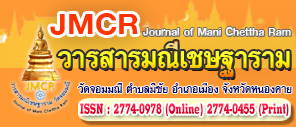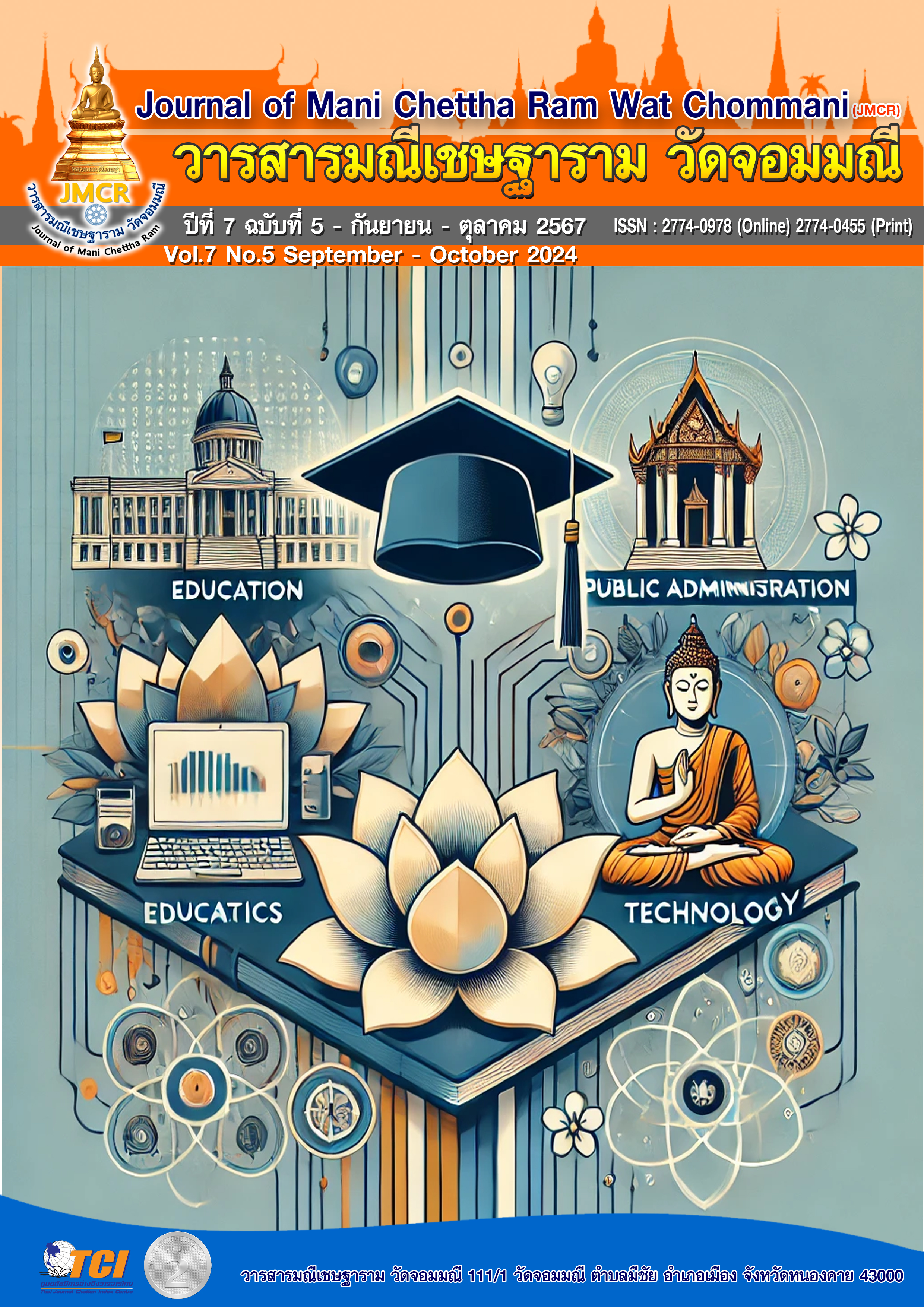TECHNOLOGY LEADERSHIP OF VOCATIONAL ADMINISTRATORS AS PERCEIVED BY TEACHERS UNDER INSTITUTE OF VOCATIONAL EDUCATION BANGKOK
Keywords:
technology leadership, vocational administrators, Institute of Vocational Education BangkokAbstract
The objectives of this research were 1) to study the technology leadership of vocational administrators as perceived by teachers under Institute of Vocational Education Bangkok, and 2) to compare the technology leadership of vocational administrators as perceived by teachers under Institute of Vocational Education Bangkok classified by gender, age, education level, and work experience. The sample consisted of 248 teachers, selected using stratified random sampling according to school size. The research instrument was a questionnaire with content validity, IOC values between .67-1.00 and a reliability value of .96. The data were analyzed by using frequency, percentage, mean, standard deviation, t-test, One-way ANOVA, and LSD.
The results of the research were as follows: 1) the technology leadership of vocational administrators as perceived by teachers under Institute of Vocational Education Bangkok was at a high level in overall, and particular aspects, ranking from the highest to the lowest mean: Digital citizenship, Technology management, Promotion of appropriate technological knowledge for professional advancement, The 21st century learning culture, and Technology vision and planning, and 2) the technology leadership of vocational administrators as perceived by teachers classified by gender, and work experience was not different in overall, while the differential age was statistically significant at the level of .05 in overall. and particular aspects, and the teachers, classified by education level was statistically significant at the level of .01 in overall and particular aspects.
References
กระทรวงศึกษาธิการ. (2562). พระราชบัญญัติการศึกษาแห่งชาติ พ.ศ.2542 แก้ไขเพิ่มเติม (ฉบับที่ 4) พ.ศ. 2562. กรุงเทพมหานคร: โรงพิมพ์องค์การรับส่งสินค้าและพัสดุภัณฑ์ (ร.ส.พ.)
ลัดดาวัลย์ เพชรโรจน์ และคณะ. (2562). สถิติสำหรับการวิจัยเทคนิคการใช้ SPSS (ฉบับปรับปรุง ครั้งที่ 3). กรุงเทพมหานคร: เจริญดีมั่นคงการพิมพ์.
ศุภชัย โพธิ์ศรี และวรชัย วิภูอุปรโคตร. (2567). การบริหารเทคโนโลยีสารสนเทศและการสื่อสารของผู้บริหารอาชีวศึกษาในสังกัดสำนักงานอาชีวศึกษาจังหวัดกาฬสินธุ์. วารสารสังคมศาสตร์และมนุษยศาสตร์ สถาบันอุดมศึกษาเอกชนแห่งประเทศไทย, 30 (1), 131-144.
สุกัญญา แช่มช้อย. (2561). การบริหารสถานศึกษาในยุคดิจิทัล. กรุงเทพมหานคร: จุฬาลงกรณ์มหาวิทยาลัย.
สำนักงานคณะกรรมการการอาชีวศึกษา. (2566). ประกาศสำนักงานคณะกรรมการการอาชีวศึกษาเรื่อง นโยบายการพัฒนาอาชีวศึกษาของสำนักงานคณะกรรมการการอาชีวศึกษา ประจำปีงบประมาณ พ.ศ. 2567. กรุงเทพมหานคร: สำนักงานคณะกรรมการการอาชีวศึกษา.
Davis, F. D. (1989). Perceived usefulness, perceived ease of use, and user acceptance of information technology. MIS Quarterly, 13(3), 319-340.
Flanagan, L., & Jacobsen, M. (2015). Technology Leadership for the Twenty-firstCentury Principal. Journal of Educational Administration, 41(2), 124-142.
Fullan, M. (2016). The New Meaning of Educational Change (5th ed.). Teachers College Press.
Krejcie, R. V., & Morgan, D. W. (1970). Determining sample size for research activities. Educational and Psychological Measurement, 30(3), 607-610.
Rogers, E. M., Singhal, A., & Quinlan, M. M. (2014). Diffusion of innovations. In An integrated approach to communication theory and research, 432-448.
Venkatesh, V., & Morris, M. G. (2000). Why don’t men ever stop to ask for directions? Gender, social influence, and their role in technology acceptance and usage behavior. MIS Quarterly, 24(1), 115-139.



